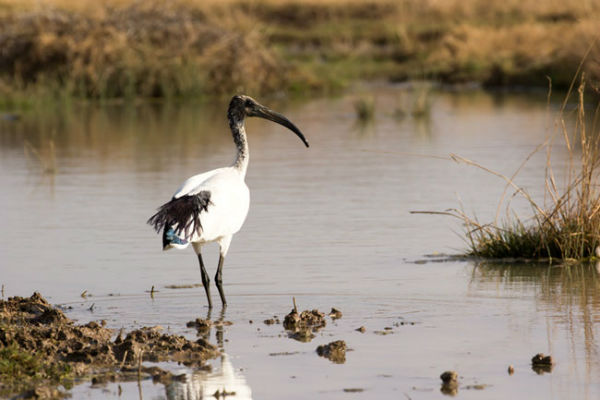
The South African National Roads Agency (SOC) Limited (SANRAL) knows that environmental management is a very important part of building and managing roads.
Constructing and operating roads can change the lay of the land, affect water resources and cause pollution. It can be particularly challenging when construction is in an environmentally sensitive area such as the Barberspan Bird Sanctuary in North West, one of South Africa’s most important bird havens.
Barberspan was one of the first wetlands in South Africa to be covered under the Ramsar Convention, an international treaty for the conservation and sustainable use of wetlands. Home to thousands of birds, it’s an important site for ornithological research and a premier birding destination.
The N14 bridge is of particular environmental interest. During its construction, SANRAL made sure it did not destroy the existing bridge under which a swallow colony existed. This came after SANRAL took into account an environmental impact recommendation. The new bridge crosses the sanctuary on the outskirts of Delareyville.
The rehabilitated and improved section of the N14 route between Delareyville and Sannieshof is making an important difference to both the community and bird refuge.
It was officially opened by Deputy Minister of Transport Sindisiwe Chikunga in March 2014 and is a vital link between Gauteng, North West, Northern Cape and Namibia.
It brings commerce, growth and prosperity to the area while safeguarding its valuable natural heritage
A haven for birds
Bird numbers at any time exceed 20 000 from 350 different species. In September and October, as the summer rains reach the area, the pan is often found teeming with more than 40 000 water birds, making it a bird lover’s paradise.
In addition to flamingos and pelicans, Barberspan is home to maccoa duck, chestnut-banded plover, black-necked grebe, Namaqua sandgrouse, greybacked sparrow lark and swallow-tailed bee-eater.
In days gone by, Barberspan was just a large, temporary pan in the fossil bed of the Harts River, formed and enlarged by northerly winds and massive herds of springbok trampling the edges of the waterhole.

